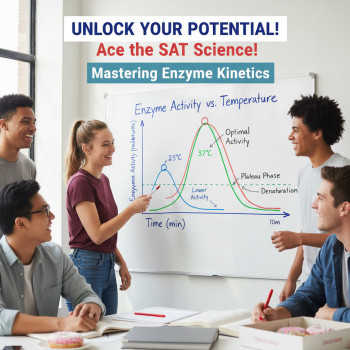Why SAT Scores Still Matter—More Than Just a Number
Let’s be honest: the college admissions landscape has changed a lot in recent years. Test-optional policies, new digital testing formats, and shifting financial aid rules can make the SAT feel like a moving target. But one thing hasn’t changed: strong standardized test scores still open doors—to admissions perks, to program placement, and very importantly, to scholarships that directly reduce what families pay.
If you’re a student (or a parent of one) preparing for the Digital SAT and the college application process, this post explains exactly how SAT scores can translate into dollars off tuition, how to prioritize your effort, and how to design a plan that’s realistic, targeted, and high-impact.

Three Ways SAT Scores Turn into Scholarship Dollars
There are three main pathways by which SAT results can help you cut college costs. Knowing which apply to you will help you decide how much time and energy to invest in score improvement.
1. Institutional Merit Scholarships
Many colleges and universities award merit-based scholarships directly to admitted students based on academic achievement—GPA, class rank, and often SAT/ACT scores. These awards can range from a few hundred dollars to full tuition or even full-ride packages in rare cases.
Key points:
- Merit awards are typically automatic for applicants who meet published thresholds, but some require a separate application.
- Larger public universities often publish clear SAT cutoffs for different award tiers; private colleges may be more holistic but still use scores as a major factor.
- Boosting your SAT score by a few dozen points can move you into a higher award tier at many institutions.
2. National & Regional Scholarships Linked to Test Performance
Programs like National Merit (and other state or regional award programs) use standardized-test results or PSAT/SAT performance as eligibility triggers. While these programs vary in structure, qualifying can provide direct cash awards, tuition discounts, or scholarship recognition that colleges use when making offers.
Keep in mind:
- Programs tied to the PSAT/NMSQT and SAT can require early action—often as early as junior year for PSAT performance.
- A National Merit designation may not cover tuition fully, but it significantly strengthens scholarship offers from many colleges.
3. Targeted Scholarships from Foundations and Employers
Some private scholarships have minimum SAT thresholds in their eligibility criteria. These are often awarded regionally or by professional groups and can be less competitive than national awards if you meet the score and profile requirements.
How Big an Impact Can the SAT Have on Your Net Cost?
Let’s translate theory into math. Below is a simplified table showing how different outcomes can influence your net cost at hypothetical colleges. These are illustrative examples—real awards vary by school and student profile—but they show how incremental score improvements can produce meaningful savings.
| College Type | Sticker Price (annual) | Merit Scholarship Tier | Example SAT Range for Tier | Net Cost After Merit (annual) |
|---|---|---|---|---|
| Public Regional University | $25,000 | High | 1300–1400+ | $7,500 |
| Private Mid-Range College | $45,000 | Partial | 1350–1450 | $20,000 |
| Selective Private University | $70,000 | Full-Ride (rare) | 1500+ | $0–$5,000 |
Notice how a single tier change—for example, moving from a 1300 to a 1400—can shift scholarship amounts by thousands of dollars each year. Over four years, that adds up quickly.
When to Prioritize the SAT: A Practical Timeline
Timing matters. You want your strongest scores available at key decision points: scholarship deadlines, admission applications, and program-specific cutoff dates. Below is a practical timeline students can follow starting in sophomore year and stretching into senior year.
Sophomore Year
- Familiarize yourself with the Digital SAT format and practice with a short diagnostic to identify strengths and weaknesses.
- Create a basic study rhythm: 2–3 weekly sessions focused on content and timing.
Junior Year
- Take an early PSAT/NMSQT and analyze results—this can determine National Merit eligibility later.
- Schedule a first SAT attempt in spring or early summer; use the results to set a target improvement plan.
- Identify colleges you’re interested in and research their published merit scholarship thresholds and deadlines.
Senior Year
- Aim to have your best SAT score submitted by early fall for colleges with early application or scholarship deadlines.
- Use any remaining testing opportunities to improve scores before regular decision deadlines.
- Mind scholarship application timelines—some require separate forms or essays.
Smart Preparation: Where to Spend Your Time for the Biggest Return
Not all study strategies produce equal returns. Here’s a prioritized list to guide efficient, score-focused prep that maximizes scholarship potential.
1. Diagnose and Target High-Value Weak Spots
A diagnostic test that identifies your weakest question types lets you avoid wasted practice. For example, if you’re already strong in reading but weaker in algebra and data analysis, focusing on math could yield the biggest score jump.
2. Practice Digital Test-Taking Skills
The Digital SAT introduces format and navigation differences—practice on a digital platform so you’re not learning the interface on test day. Speed with digital tools is a real advantage.
3. Build a Consistent, Measurable Plan
Short, regular practice beats marathon sessions. Track progress with timed sections and periodic full-length diagnostics. Celebrate gains and adjust the plan when progress plateaus.
4. Use Focused, High-Quality Help When Needed
Personalized tutoring—especially 1-on-1 guidance—can be the most cost-effective investment when you’re targeting scholarship thresholds. Tutors who tailor study plans to your gaps, model effective strategies, and provide feedback accelerate improvement. Programs like Sparkl offer tailored study plans, expert tutors, and AI-driven insights that help students focus on what matters most for scholarship-caliber score gains.
Real-World Examples: How Score Gains Turn Into Savings
Let’s look at three short case studies to make this concrete.
Case Study A: Mia — The Regional Public University
Mia’s baseline SAT was 1250. Her target university had merit tiers at 1250, 1350, and 1450. With targeted math and digital test strategies over six months, Mia scored 1370 on a retake. Her award jumped from $2,000/year to $10,000/year—an $8,000 annual improvement and $32,000 across four years. With a modest investment in a tutor for three months, she essentially multiplied that cost by many times over.
Case Study B: Jamal — National Recognition
Jamal’s strong PSAT performance placed him in semifinalist consideration for National Merit for his region. Even though National Merit didn’t cover full tuition, several colleges offered additional institutional scholarships to National Merit finalists. The combination of a $2,500 national award plus institutional supplements reduced Jamal’s net cost by over $25,000 across four years.
Case Study C: Priya — Narrow Program Advantage
Priya aimed for a competitive honors business program within a public university. The honors program offered guaranteed merit awards to students who met a specific SAT threshold. A 40-point improvement in Priya’s math scale—not huge—moved her into the honors scholarship range, saving her nearly $10,000 a year and giving her access to paid internships tied to the program.
How to Research Scholarship Opportunities Effectively
Searching for scholarships is partly detective work. Here’s a step-by-step method to find opportunities where SAT scores matter:
- Make a list of target colleges. Look at their financial aid & scholarship pages for published merit award thresholds and application requirements.
- Use scholarship search tools to filter by GPA, major, and SAT minimums. Keep a running spreadsheet with deadlines and required materials.
- Sign up for services like Student Search Service when registering for the SAT—colleges and scholarship providers sometimes reach out with offers based on your profile.
- Check state-level merit programs—many states have scholarship programs with clear SAT score cutoffs.
Common Questions Students and Parents Ask
Q: If a school is test-optional, do scores still matter for scholarships?
Yes. Test-optional admissions policies do not always apply to scholarship decisions. Many institutions still use standardized-test scores for allocating merit awards, so submitting a strong score can increase scholarship eligibility even if it’s optional for admissions.
Q: How many points should I try to improve to make a difference?
There’s no single answer, but aim for the smallest realistic jump that moves you into the next scholarship tier at your target schools—often 20–80 points. Use each school’s published thresholds to set concrete score goals.
Q: Will tutoring pay for itself?
Often, yes. If a targeted tutoring program helps you reach a scholarship tier worth thousands per year, the return on investment can be substantial. Personalized, goal-driven tutoring that focuses on your specific weaknesses tends to deliver the best results in the least time. Services like Sparkl provide 1-on-1 guidance, tailored study plans, and AI-driven insights to focus practice where it truly matters.
Budgeting Your Prep: Cost vs Reward
Not every family can or should spend heavily on prep. The most effective investment is the one that targets gaps strategically:
- Free resources + disciplined practice: Good for students with solid self-discipline and modest score goals.
- Group classes/workshops: Efficient for structured learning and test strategies.
- 1-on-1 tutoring with targeted plan: Best when you’re chasing specific scholarship thresholds or need quick, reliable improvement.
Think about prep spending as a tuition investment: if an extra 50 points nets you $8,000 a year, that’s $32,000 over four years. Even a multi-thousand-dollar tutoring program can be paid off many times over with one successful scholarship outcome.
Actionable Checklist: What to Do This Month
- Run a full-length digital SAT diagnostic under timed conditions.
- Create a short list of 6–8 target colleges and record their merit scholarship thresholds and deadlines.
- Decide whether to opt into Student Search Service when you register for the SAT.
- Set a practice schedule: 3–4 focused sessions weekly, plus one full-length test every 4–6 weeks.
- If you’re aiming for scholarship thresholds, schedule a conversation with a tutor who can recommend a 6–12 week plan tailored to those score goals—Sparkl’s tutors, for example, often begin with such a targeted approach.

Final Thoughts: Strategy Over Stress
There’s a temptation to treat SAT prep like a solitary race—more hours, more practice tests, more pressure. But the real pathway to scholarship savings is strategic: diagnose accurately, practice deliberately, and use targeted help where it moves the needle fastest.
For many families, a focused, personalized approach—short bursts of expert tutoring, a tailored study plan, and timely retakes—delivers the best return. If you’re trying to reach a scholarship cutoff, prioritize the actions that align directly with that goal: targeted content review, digital test practice, and timed diagnostics. That focused approach transforms time into money saved, often by thousands per year.
A Quick Resource Roadmap
Before you go, keep this compact roadmap on your desk:
- Know your target colleges and their scholarship thresholds.
- Take a diagnostic and set a realistic point goal tied to scholarship tiers.
- Practice digitally and measure gains with periodic full tests.
- Consider targeted 1-on-1 tutoring if you need a strategic jump—especially when scholarships are on the line.
- Opt into Student Search Service to increase scholarship outreach opportunities.
Need Help Designing a Scholarship-Focused Plan?
If you want a second pair of eyes on your college list and a targeted plan to chase scholarship thresholds, reach out for a planning session. A short, focused plan—combining diagnostics, customized practice, and a few weeks of 1-on-1 coaching—can be enough to bridge the gap between tiers. Personalized tutoring, with tools like tailored study plans and AI-driven insights, can make that difference quicker than you think.
Parting Encouragement
Scholarships are not random luck. They respond to preparation, persistence, and smart strategy. A modest, targeted improvement on your SAT can translate into tens of thousands of dollars in saved tuition. So take a breath, map the path, and be strategic: your future self (and your bank account) will thank you.

















No Comments
Leave a comment Cancel